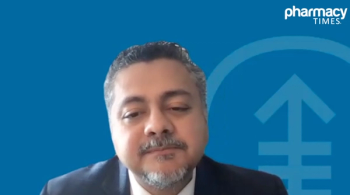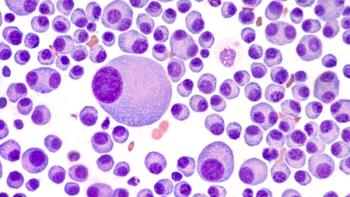
HIV Reporting Meets the Front Line: How Pharmacists Translate Global Health Into Local Care
Key Takeaways
- Global HIV funding cuts have led to reduced treatment coverage, prevention programs, and research disruptions, worsening the public health burden.
- Health journalists face significant barriers in accessing accurate information, contributing to misinformation and public confusion.
Pharmacists play a vital role in translating global health news into actionable knowledge for their communities.
In 2024, an estimated 40.8 million people around the world were living with human immunodeficiency virus (HIV) with nearly 1.3 million new infections. HIV remains a significant global public burden—one that is expected to worsen following cuts to global HIV funding by the Trump administration.1
In a panel session at the International AIDS Society conference in Nairobi, Kenya, public health reporters and scientists discuss the impact of funding cuts on reduced treatment coverage—highlighting limited rollout of lenacapavir (Yeztugo; Gilead Sciences)—smaller prevention programs, and research disruptions. They highlight the need for innovative reporting strategies to address the crisis, emphasizing the importance of ethical, accurate reporting, disseminating misinformation, including community stories, prioritizing solutions-focused journalism, and taking local ownership of health challenges. The goal is to move beyond simply reporting on problems to showcasing how communities and countries are actively responding to and overcoming challenges in global health.
Funding Cut Consequences
For decades, the United States has positioned itself as a pillar of support for global public health efforts, providing significant proportions of funding for treatment, prevention, and research. This investment established the nation as a global health leader and critical partner in disease control and humanitarian aid. However, this status is now in a precarious position as funding cuts destabilize health agencies. Numerous institutions—such as the NIH, CDC, FDA, and others—are experiencing significant disruptions, compromising efforts across multiple disease states. Notably, HIV remains one of the most impacted.2
“The administration has been cutting global health grants,” said Apoorva Mandavilli, print journalist at The New York Times. “They've also been just creating havoc with the domestic cuts to the CDC and the NIH… so it's sort of chaos everywhere.”2
There are numerous consequences associated with these funding cuts, which have already negatively affected vulnerable communities on the ground. With reduced or eliminated support, communities may face project shutdowns, treatment interruptions for patients with HIV, the closure of clinics and health facilities, and reduced access to antiretroviral therapy and prevention programs. There are also broader systemic implications, not limited to a possible increase in HIV transmission, disruption of long-standing research collaborations, and heightened pressure on local governments to fill critical funding gaps.2
Funding for HIV research, prevention, and treatment is being dismantled through multiple avenues. USAID is a crucial lifeline around the globe, providing technical assistance, infrastructure support, and emergency relief. In June 2025, the White House submitted a formal rescissions package to Congress that proposed eliminating billions in foreign aid funding—including over $8 billion allocated to USAID. These cuts compromise long-standing initiatives aimed at reducing HIV burden in high-risk regions. Most notably, they threaten research intended to develop the first HIV vaccine. Additional cuts to the NIH have disrupted domestic HIV research efforts, while prevention and surveillance programs under the CDC have been eliminated entirely.3-5
Panelists also highlighted the impact of these cuts on the rollout and access to lenacapavir. Although lenacapavir was initially celebrated as a potential breakthrough in HIV treatment last year, the current funding crisis has complicated its distribution, limiting access in many of the communities that would benefit most.2
“But today, lenacapavir is still a media story—but not for all the reasons that it was last year when we heard about it,” said Mia Malan, founder and editor-in-chief of South Africa's Bhekisisa Centre for Health Journalism. “It unfortunately graphically encapsulates the impact of the US funding cuts, where many of the projects that would roll out in a couple of years are now much smaller or no longer exist.”2
Challenges of Reporting on Global Health Cuts
Health journalists covering the ongoing funding cuts face significant barriers when trying to gather accurate information. Many sources are afraid to speak on the record, particularly those whose positions or projects depend on continued government support. Organizations themselves are often hesitant to publicly discuss how funding reductions are affecting their operations, either due to internal policies or fear of jeopardizing future financial support. Additionally, reporters face difficulty accessing government officials and scientific experts. The potential risks to funding and professional relationships make many sources reluctant to speak candidly, even off the record.2
These information access challenges compound a broader media environment that’s already overwhelmed by both content saturation and misinformation. In the absence of clear, timely, and trusted reporting, speculation, fragmented narratives, and misleading content spreads quickly through social media; the result is a public that is inundated with information but unsure of what to trust.2
This influx of both legitimate updates and misleading claims shapes public perception in complex ways. Many readers are fatigued by negative news cycles or overwhelmed by technical language, whereas others internalize incomplete or inaccurate narratives that minimize the real-world consequences of disinvestment in health systems. For pharmacists, who often serve as one of the most accessible sources of health information in their communities, that means spending more time addressing misinformation, clarifying policy changes, or reassuring patients amid growing uncertainty.2
"The other big challenge that we are facing is news avoidance, because there's just too much doom and gloom,” explained Ann Soy, BBC senior Africa correspondent and deputy to the Africa Editor. “More people are avoiding news, but then we are still getting the information from influencers. These are not journalists; they're content creators on social media, and there's a lot of misinformation and disinformation."2
Empowering Health Care Systems and Pharmacists
Although the challenges posed by funding cuts and misinformation are significant, the panel discussion emphasized several promising solutions centered on community resilience, innovation, and long-term sustainability. These approaches are especially relevant to pharmacists and other frontline health professionals, who often serve as trusted points of contact in both formal and informal health systems.2
One critical strategy is shifting the narrative to highlight resilience and local innovation. Journalists and advocates alike can help reframe stories to focus on how communities and health systems adapt under pressure—showcasing successful, cost-effective responses that inspire action.2
Government and systemic solutions discussed in the panel also pointed to the need for more efficient integration of health services and the development of innovative, community-based care models. These are areas where pharmacists are already playing expanded roles, especially in medically underserved regions. By decentralizing care and leveraging pharmacists for point-of-care testing, chronic disease management, and health education, health systems can reduce strain while improving reach.2
Pharmacists remain essential not only to maintaining treatment continuity but also to countering misinformation and educating patients. As trusted health professionals embedded in communities, pharmacists can help bridge the gap between global health reporting and local understanding—translating complex policy shifts into practical guidance and reinforcing accurate, solutions-focused information. Sustained progress against HIV will require not only renewed political will, but also a reimagined global health narrative that champions local solutions, protects essential providers, and ensures equitable access to care.2
REFERENCES
1. Global HIV & AIDS statistics — Fact sheet. UNAIDS. July 10, 2025. Accessed July 17, 2025. https://www.unaids.org/en/resources/fact-sheet
2. Malan M, Grinsztejn B, Ngure K, et al. The future of global health reporting. IAS 2025. July 13, 2025, to July 17, 2025. Nairobi, Kenya.
3. Freking K, Jalonick MC. The House is poised to OK Trump’s $9 billion cut to public broadcasting and foreign aid. Associated Press. July 17, 2025. Accessed July 17, 2025. https://apnews.com/article/pbs-npr-budget-cuts-trump-republicans-b0044285659ab708e23eb2dc2f3eabfa
4. Gounder C, Tin A. Trump administration ending multiple HIV vaccine studies, scientists and officials say. CBS News. May 30, 2025. Accessed July 17, 2025. https://www.cbsnews.com/news/trump-administration-ending-multiple-hiv-vaccine-studies/
5. Hepatitis prevention rolled into state block grant. HIV+HEP Policy Institute. June 2, 2025. Accessed July 17, 2025. https://hivhep.org/press-releases/trump-budget-ends-all-cdc-hiv-prevention-programs-while-maintaining-care-treatment-and-prep/
Newsletter
Stay informed on drug updates, treatment guidelines, and pharmacy practice trends—subscribe to Pharmacy Times for weekly clinical insights.




















































































































































































































